Façade Project
by Han Sungpil
Since I saw the spectacle of the St Paul’s Cathedral in London, I have been confounded by the scene. It was covered by scaffolding with a life-size painting, an exact replica, of the cathedral. The separation between reality and simulation collapsed before my naked eyes. Depending on where I stood, as my perspective shifted, the building was travelling between the realm of realism and that of hyper-reality. For me, it was surreal. The life-size painting of the cathedral masked the original, but also stood in for it. The reality of the sight welcomed many passers-by and visitors.
There are two streams of thought in art history. One seeks to imitate the real world and the other to project the ideal. These two streams have always been at odds with each other ; the history of art has been a dialogue between realism and idealism.
When the science was advanced enabling to represent a perspective during the Renaissance, it offered a way to capture the three dimensional reality into a two dimensional plane. The invention of photography in 1839 was sensational as images became so real as to appear life-like. The photography medium made possible to convert a three-dimensional object into the fixed two-dimension.
However, when a photograph represents a two-dimensional perspective painting, does this represent a three-dimensional reality or offer its mirror image?
My question in ‘Facade’ is: what does such a photography imply? The real or the ideal? The body of work that I produced after carefully observing the St Paul’s Cathedral examines photography’s ambivalent role in representation.
From the late nineteenth century to the early twentieth century, there was a controversy between style imitating the salon-like pictorial atmosphere and that of pictorial photography.
In the post-war era, the hyper-realism and photo realism emerged. In the digital era, the boundary between painting and photography was blurred, which resulted in hybridising forms. These two genres became indistinguishable.
If the photographic technique produces a visual image to the exact size and shape of the object it represents, would it be a photograph or a painting?
What happens if an artist manipulated digitalised photographic image by using computer techniques to enhance it much better than the previous representation?
In addition, if an artist literally photographed a photo-realist painting, is the resulting image a photograph or a painting?
‘Facade’ explores the fluidity between the real and the ideal. My photographs portray the trompe l’oeil paintings decorated on the scaffolding, the covering, and the wall. In my opinion, they are simply there to fulfill the human desire to experience the ideal in this real world. It is the desire instable in the urban spaces in our contemporary era.
Han Sungpil lives and works in Seoul, South Korea
To view more of Han Sungpil, please visit his website.

Fata Morgana, 2006, Chromogenic Print

Displaced Space, 2006, Chromogenic Print

Fable & Fairy Tale, 2010, Chromogenic Print
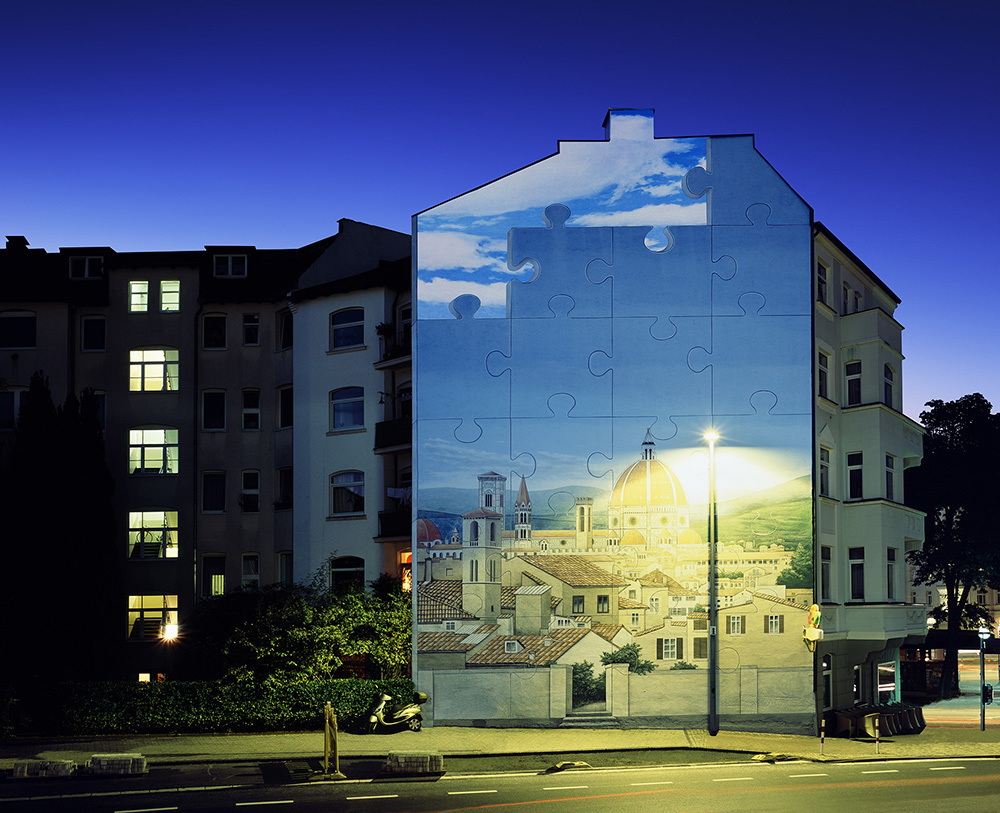
Pieces of Puzzles, 2013, Chromogenic Print
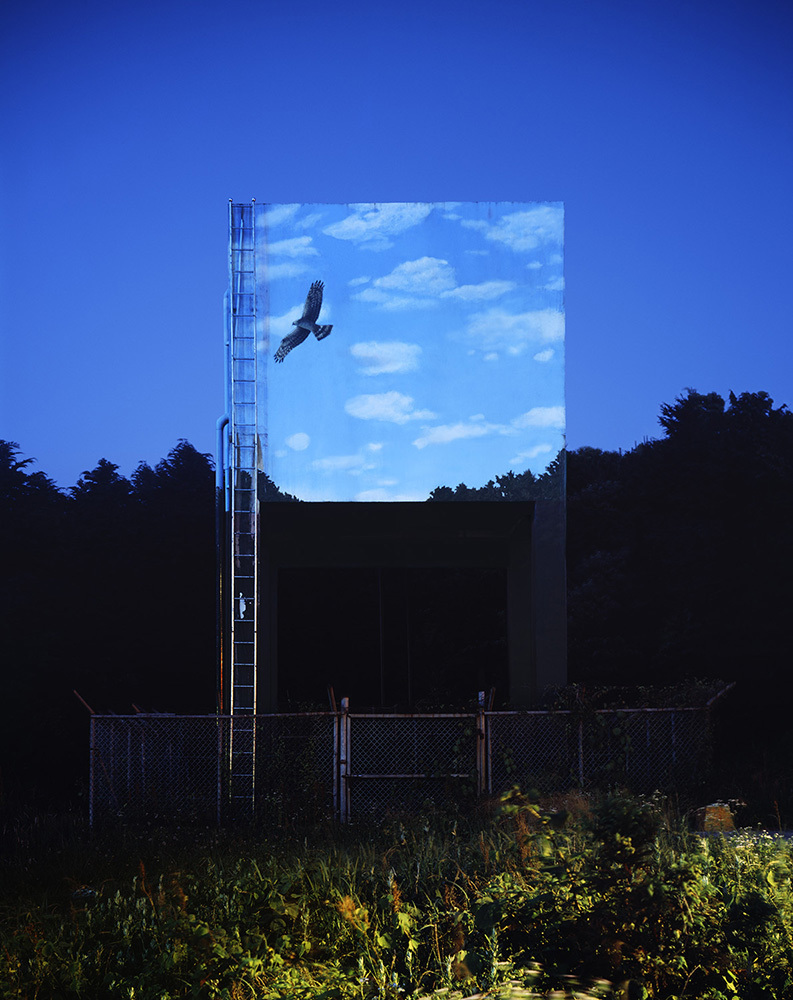
Fly High into the Blue Sky, 2012, Chromogenic Print
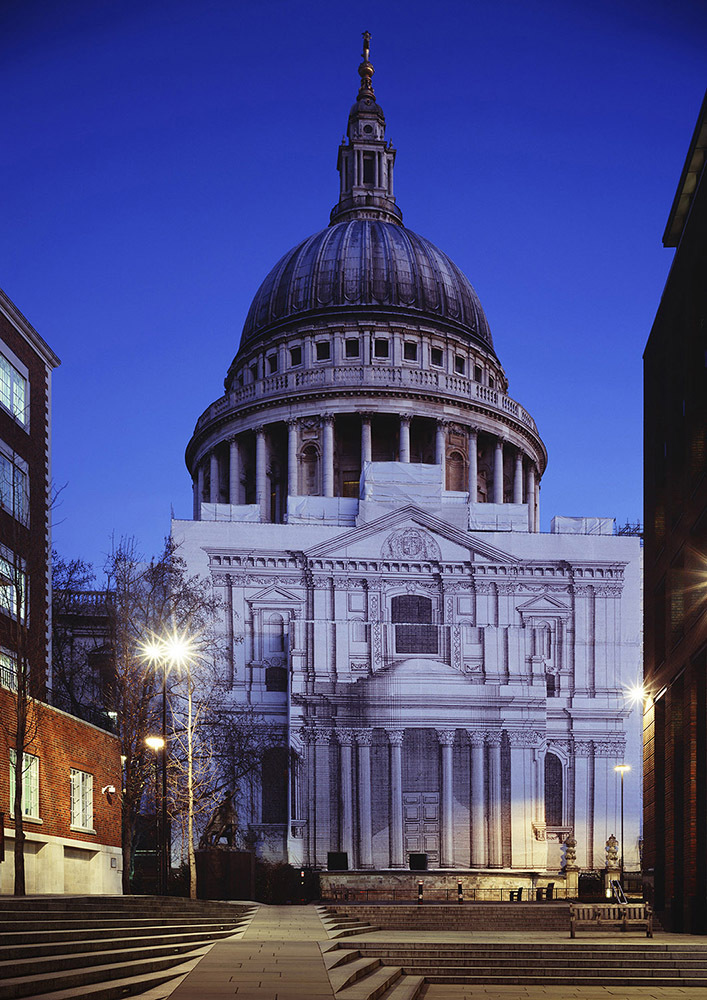
Holy Light, 2006, Chromogenic Print

La Grand-Place, 2012, Chromogenic Print
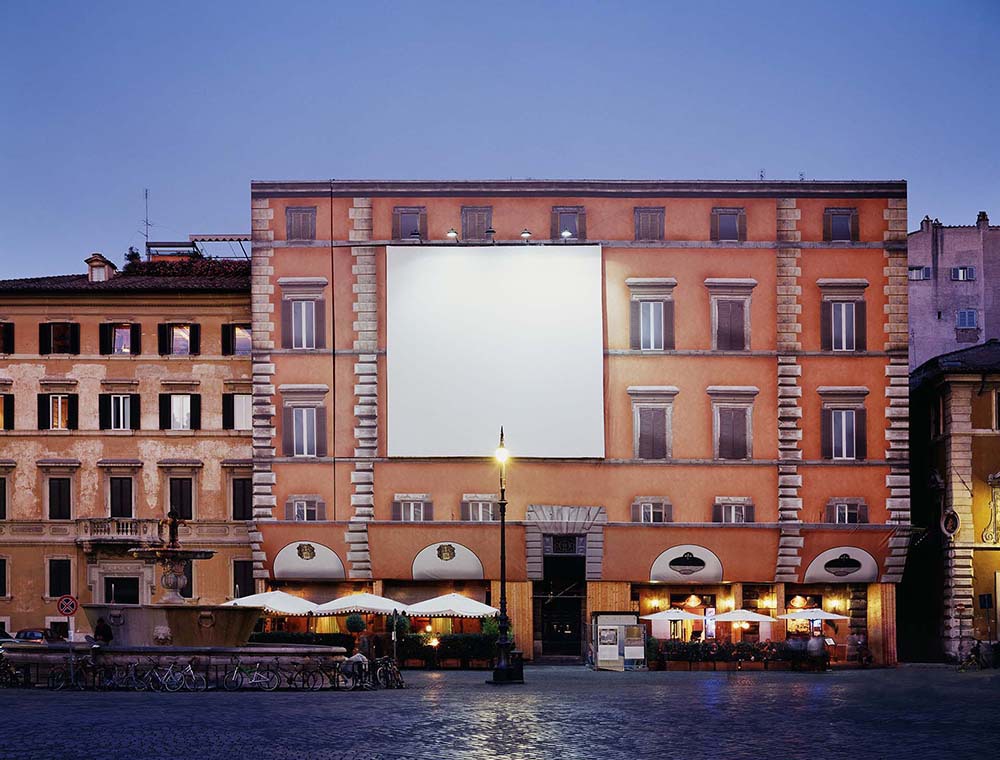
Two Screens, 2006, Chromogenic Print
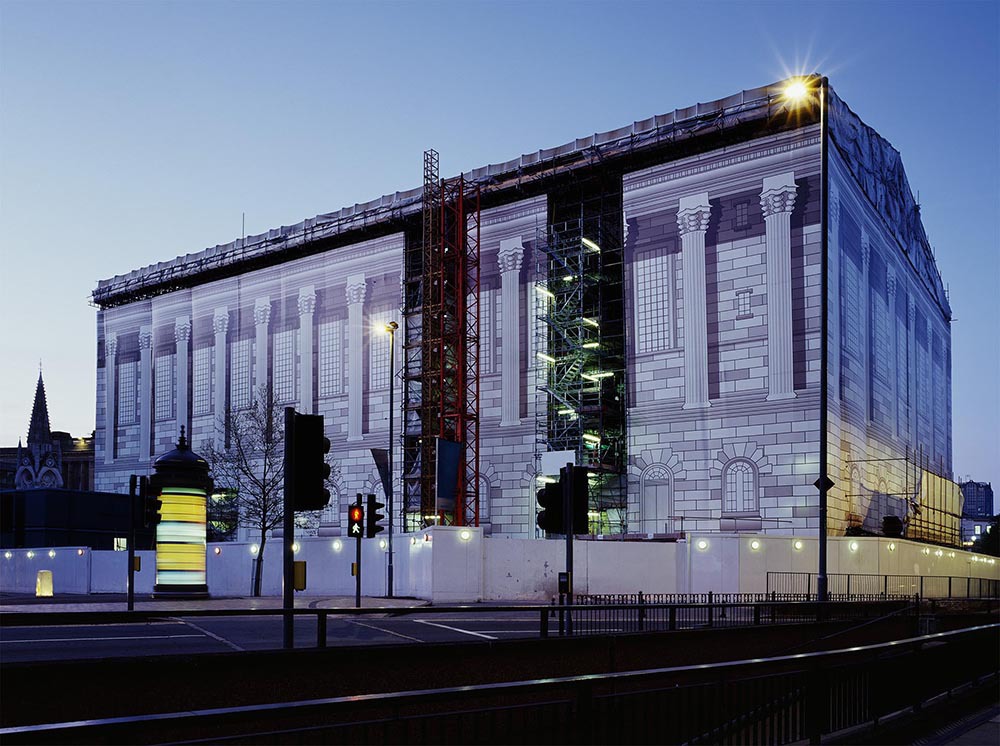
Neo-city, 2006, Chromogenic Print

Replacement, 2006, Chromogenic Print
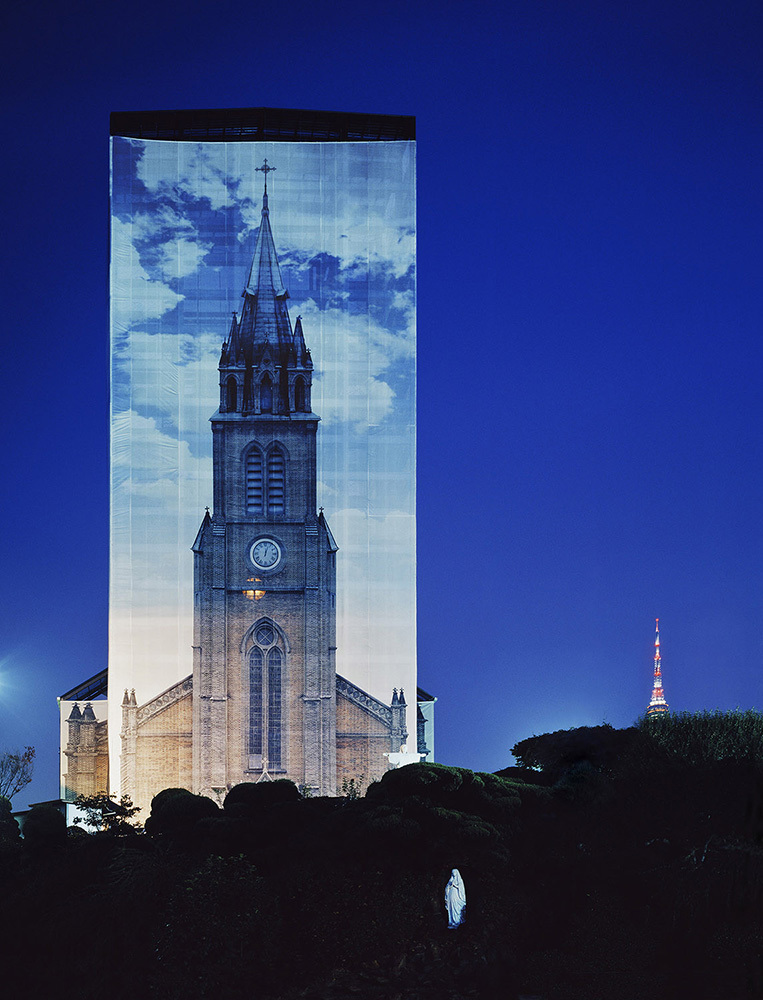
The Dominion of Light, 2006, Chromogenic Print
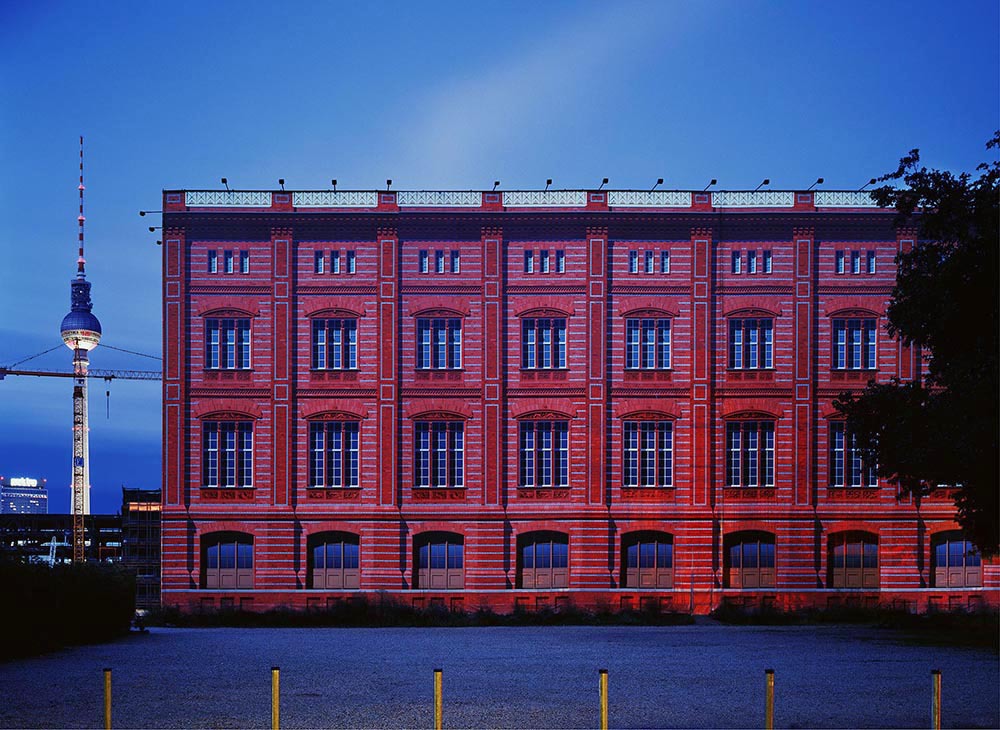
The Red Curtain, 2006, Chromogenic Print
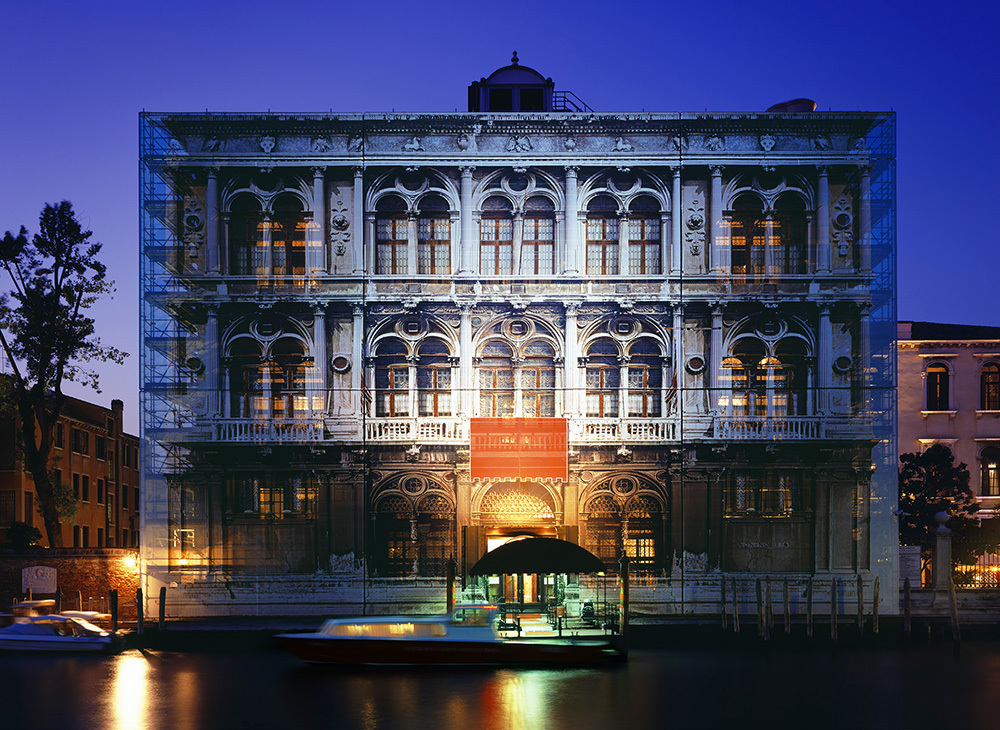
Janus 2, 2008, Chromogenic Print
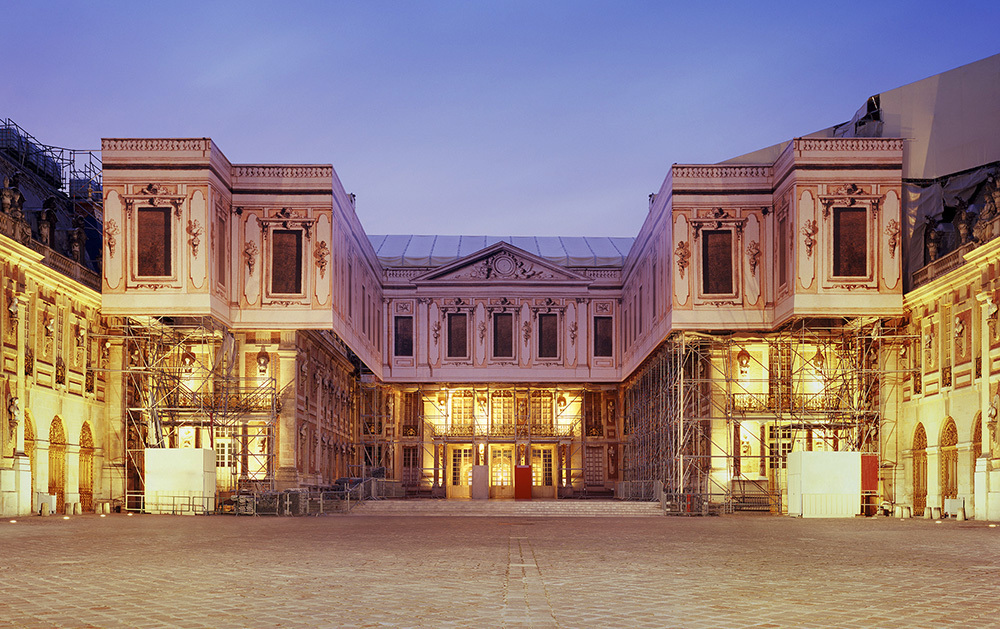
le Roi Soleil, 2008, Chromogenic Print
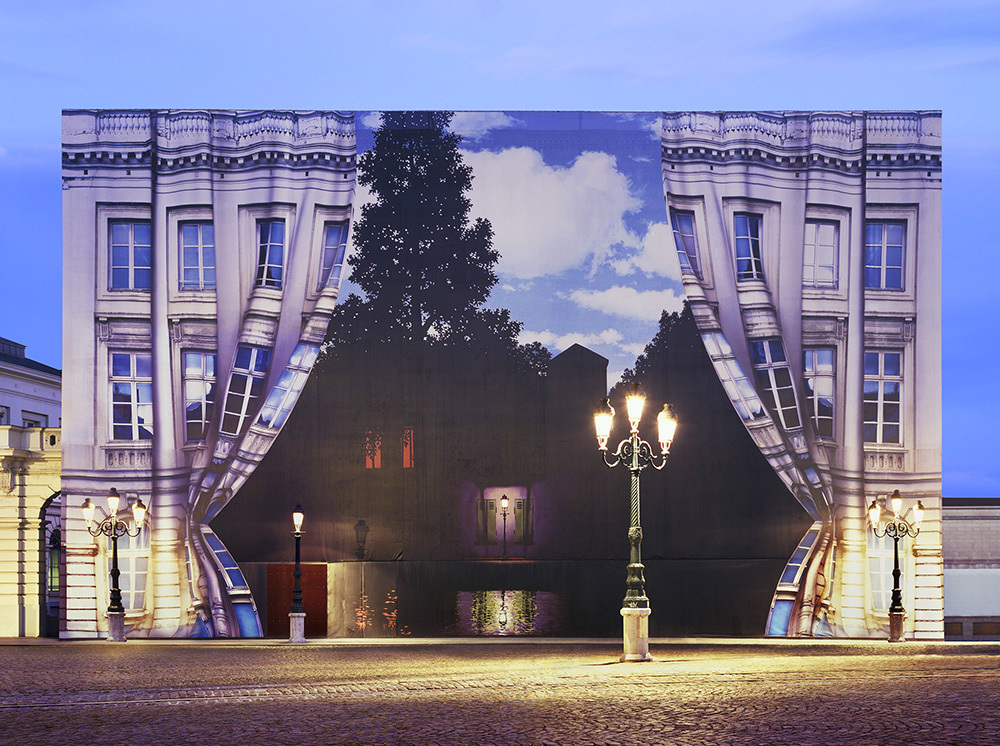
Light of Magritte, 2009, Chromogenic Print
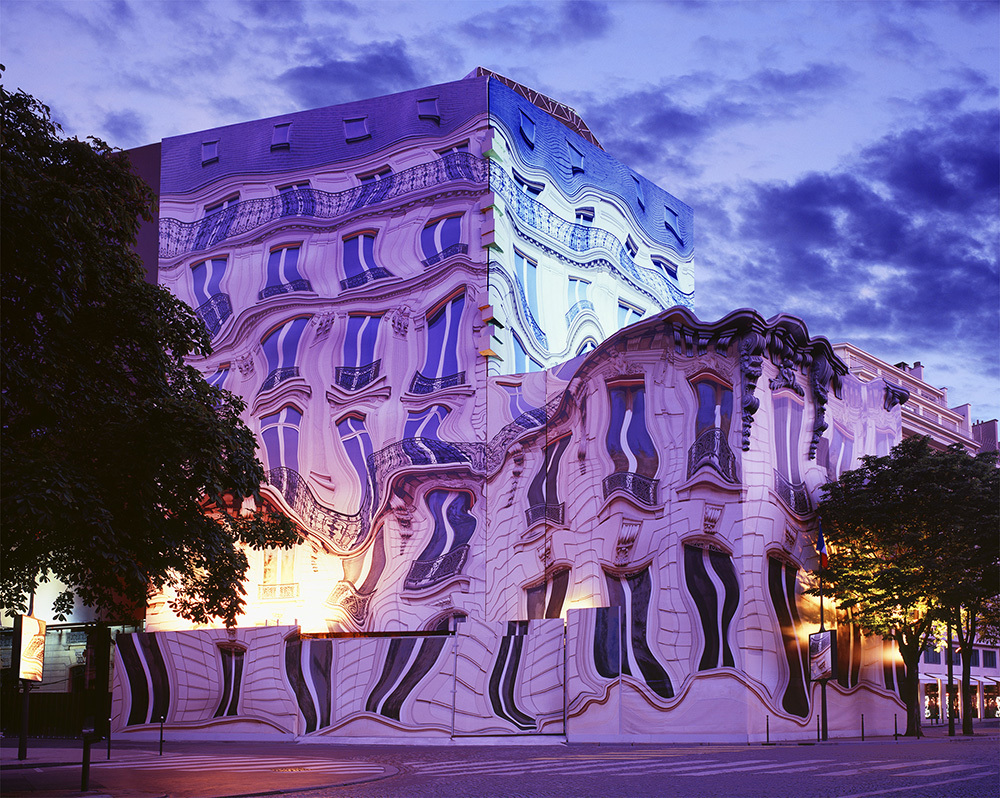
Metamorphosis, 2008, Chromogenic Print

Toshogu, 2011, Archival Pigment Print
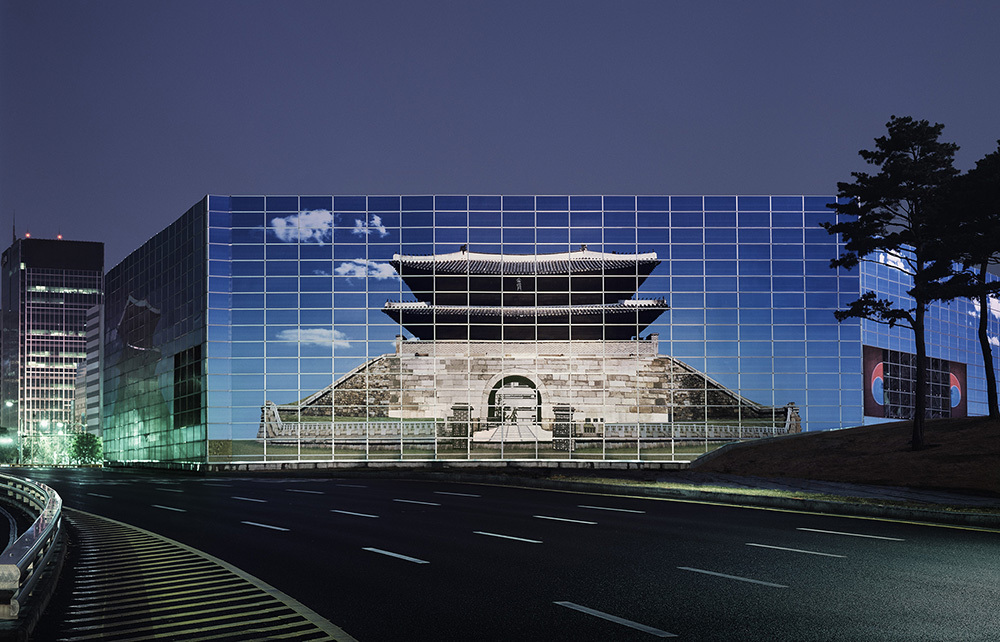
No more plastic Surgery, 2011, Archival Pigment Print
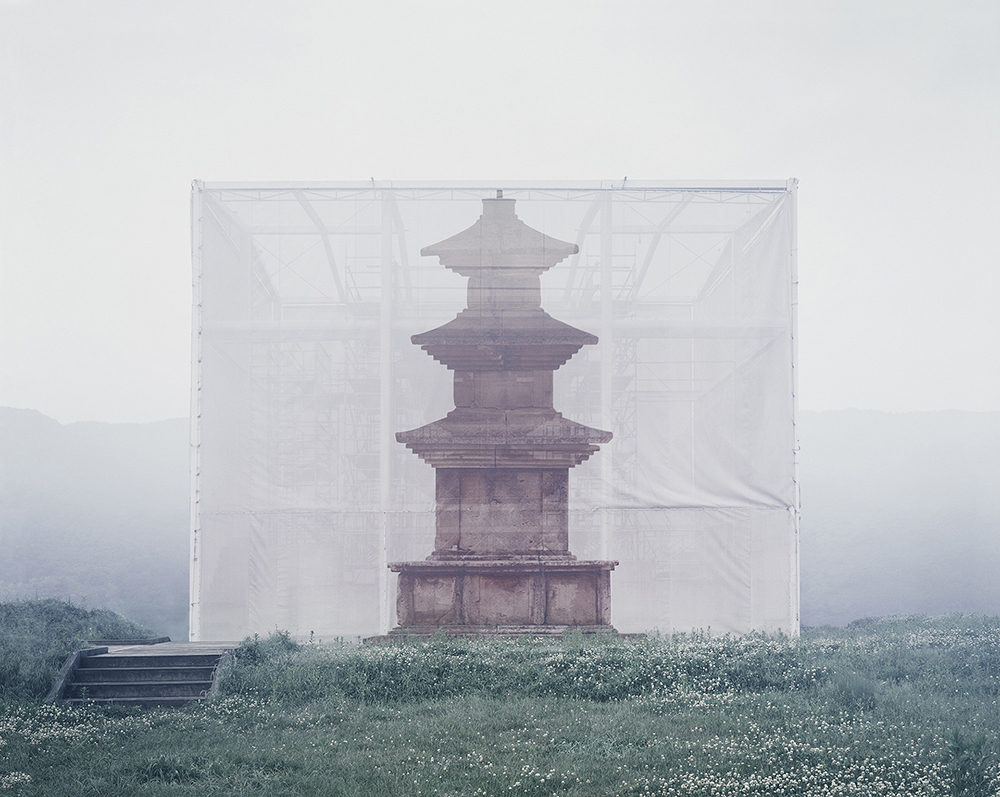
Illusionary Pagoda, 2011, Archival Pigment Print
Façade 작업노트
한성필
2004년 겨울, 공사중인 런던의 세인트 폴 대성당 (The Saint Paul Cathedral, London)을 복원 공사하기 위해 정확히 복사해 놓은 실물 크기의 이미지로 가려 놓은 것을 발견하고 놀랄 수 밖에 없었다. 정확히 이야기 해서 실제 (Reality)와 재현의 경계에서 혼동을 할 수 밖에 없었던 것이다. 나의 위치, 즉 시각과 원근의 이동에 따라서 건물은 ‘실제 (Reality)’와 ‘극 실재의 재현 (Hyper-Realistic Simulacrum)’의 경계 사이에서 보여지고 있었다. 한마디로 표현해서 그것은 초현실이었다. 등신대 크기의 이미지는 원본 (Original)인 성당을 가려놓았지만 또한 동시에, 원본 (Original)을 대신하여 잔상 (殘像)의 이미지로써 대치하고 있었던 것이다. 많은 행인들이나 관광객들은 이 실재 같은 재현, 혹은 재현 같은 실재에 대한 광경에 모두 즐거워하고 있었다.
아마도 지금까지 수 천 년간의 예술사를 간단히 나누어본다면 ‘현실을 모방하는 것’ 과 ‘이데아를 투영하는 것’이라는 크게 두 흐름으로 볼 수 있을 듯 하다. 그 두 흐름들은 예술사의 고리 안에서 항상 같이 경쟁하고 호흡하면서 사실주의 (Realism)과 이상주의 (Idealism)의 기초를 만들었을 것이다.
르네상스 시대에 과학적 접근의 원근법이 발견된 것은 3차원의 실재 (Reality)를 2차원의 평면 예술로 전환하기 위한 노력이었다. 또한 1839년에 사진의 발명은 이미지 자체가 사실같이 보여지는 실제 (Real)와 같은 이미지로 만들었다는 점에서 획기적인 업적이라고 할 수 있을 것이다. 하지만 사진 역시도 단순히 3차원의 원본을 가진 실재 (Reality)를 2차원 은염 (銀鹽) 이미지에 시간과 공간을 고정시켰던 것이다.
그렇다면 사진이 2차원의 원근법을 사용한 회화를 재현한다고 하면, 이것은 3차원의 리얼리티의 재현인가 혹은 거울 같은 이미지의 복제인 것인가? ‘파사드 (Façade)’ 작업에서 ‘이러한 사진들은 실재 (Reality) 또는 이상 (Ideal) 중에 무엇을 구현시키려는 것인가?’ 라는 의문점에서 시작되었다. 복원중이었던 런던의 세인트 폴 (The Saint Paul Cathedral, London)을 본 이후 계속하고 있는 이 작업은 회화와 사진 재현의 양면적 역할에 대한 고찰이다.
예술사 안의 사진과 미술의 발전 단계에서 서로의 스타일을 모방하는 것에 대해서 가끔은 격렬하고 논쟁을 통해, 가끔은 서로에서 호감을 가지며 발전을 해왔다. 그 예로 사진에서 살롱풍의 회화주의 사진 (Pictorial Photography)와 같은 방식으로 회화를 모방해왔던 노력이나 반대로 회화에서 하이퍼-리얼리즘 (Hyper-Realism) 또는 포토리얼리즘 (Photo Realism)과 같은 방법으로 사진을 모방하려던 시도들이 있을 것이다.
하지만 디지털 시대에 이르러 회화와 사진의 경계는 상호 혼성을 통해 붕괴되고 혼합되며 그 정의를 분간하기 힘들게 되었다.
만약, 회화가 사진 기술적 방법을 통해 정확히 같은 크기와 모습으로 사물을 재현한다고 하였을 때, 이 이미지의 결과물은 과연 사진으로 규정할 것인가? 혹은 회화로 정의를 해야 할 것인가?
더욱이, 예술가가 이와 같은 이미지를 가지고 회화 같은 붓 터치나 리터칭과 같은 디지털 사진 이미지의 처리를 통해 원작인 회화보다 더욱 뛰어난 회화적 효과인 사진을 만들어 낸다고 하면 이 결과물은 어떻게 정의를 할 것인가? 또한 예술가가 포토리얼리즘 (Photo Realism)의 회화를 그대로 사진으로 복사하는 경우, 결과물은 사진인가, 혹은 회화인가?
‘파사드 (Façade)’ 작업에서는 이미지의 재현 속에서 실재 (Reality)와 이상 (Ideal) 간에 교차되어 있는 흐름들을 찾아보려고 한다. 즉 복원 건축물이나 거리에서 볼 수 있는 실재 (Reality)가 투사된 이상화 된 이미지 (Idealized Images), 이와 동시에 반대 상황인 사진 이미지들을 통해 인간의 욕망의 움직임에 대한 물음을 제기하고자 한다.
도시와 초도시 (超都市) 공간들 (Hyper-Urban Spaces)에 초점을 맞춘 이 작업을 통해 일시적인 실재 (Reality)와 이상 (Idealism)간의 관계와 본질을 찾아 보려고 한다. 즉 이것은 현대 사회를 살아가는 우리들에게 있어 도시 공간 속에 존재하는 욕망의 불안정한 모습인 것이다.
